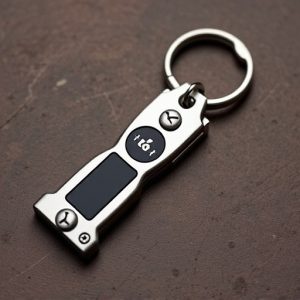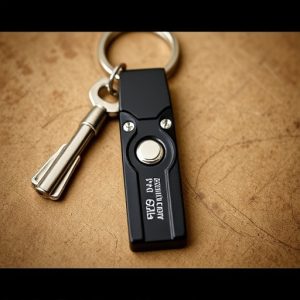Keychain Alarms: Design, Legalities, and Safety Features Explored
A modern keychain design combines convenience and security by integrating an alarm function, offerin…….
A modern keychain design combines convenience and security by integrating an alarm function, offering a unique solution for individual protection. While seemingly innocuous, such keychains may be classified as weapons due to their physical attributes, highlighting the importance of understanding legal interpretations worldwide regarding prohibited keychain weapons. This includes bans on specific features like hard edges, sharp points, or high-decibel sound emitters. Despite not appearing on the Prohibited Keychain Weapons List, innovative integrated alarm keychains enhance security with motion sensors and LED lights to deter thieves, especially in high-risk areas.
“Unleash peace of mind with the ultimate self-defense companion—a keychain with built-in alarm device. This innovative tool combines convenience and security, offering a unique solution for personal safety. In this article, we explore the concept, legal aspects, and design features of these compact yet powerful devices. From understanding what makes a keychain a prohibited weapon under certain laws to discovering safety features that enhance your protection, get ready to unlock the secrets behind this game-changing accessory, especially when considering the growing need for effective self-defense options.”
- Understanding the Concept: A Keychain with an Alarm Functionality
- Legal Considerations: What Makes a Keychain a Weapon?
- Design and Safety Features to Enhance Your Security
Understanding the Concept: A Keychain with an Alarm Functionality
The idea behind a keychain with built-in alarm functionality is to offer a unique, everyday carry tool that combines convenience and personal safety. This innovative device transcends the traditional keychain’s role as a simple key holder by integrating an alarm system, adding a layer of protection against potential threats. The concept is particularly relevant in today’s world where personal security is a paramount concern.
This keychain alarm serves as a deterrent and a means to draw attention in case of distress. It allows users to quickly and discreetly signal for help, especially in situations where carrying a traditional alarm device might be cumbersome or impractical. Understanding the functionality and features of such keychains can empower individuals to make informed decisions about their safety, even when on-the-go. Moreover, being aware of prohibited keychain weapons lists ensures that these devices adhere to legal boundaries, promoting public safety and responsible ownership.
Legal Considerations: What Makes a Keychain a Weapon?
In many jurisdictions, the legal definition of a weapon is broad and can include objects designed or capable of causing harm. While a keychain with an integrated alarm device might seem like a simple tool for personal safety, its potential as a weapon cannot be overlooked. The primary consideration here is not so much the alarm function but the physical attributes that could enable it to cause injury. Keychains with hard edges, sharp points, or customizable attachments designed for impact or piercing could fall under the category of prohibited keychain weapons.
The concept of what constitutes a weapon varies across countries and states, leading to a diverse Prohibited Keychain Weapons List. Some legal systems may categorize objects based on their design, intended use, or the potential harm they can inflict. For example, certain jurisdictions prohibit keychains with blades or spikes attached, while others might focus on devices that can emit high-decibel sounds capable of causing temporary hearing damage. Understanding these legal nuances is crucial to ensure that such a keychain remains within the boundaries of the law and does not lead to unintended consequences or legal repercussions.
Design and Safety Features to Enhance Your Security
The design of a keychain with an integrated alarm device is both innovative and practical, offering enhanced security features in a compact form factor. This innovative accessory combines the functionality of a traditional keychain with advanced protection against theft or unauthorized access. The alarm system is typically triggered when the keychain is separated from its attached item, such as a bag or backpack, emitting a loud sound to deter potential thieves.
In terms of safety, these keychains are designed with specific considerations in mind. They often include features like motion sensors and impact-activated alarms, ensuring that any sudden movement or attempt to remove the keychain without authorization sets off an alarm. Additionally, some models incorporate LED lights for better visibility during low-light conditions. The integration of these advanced technologies makes them a powerful tool to protect personal belongings, especially in high-theft areas or for individuals who travel with valuable items. It’s important to note that while they may not be on the Prohibited Keychain Weapons List, their primary function is to enhance security rather than serve as a weapon.
A keychain with a built-in alarm device offers an innovative solution for personal security, but it’s crucial to understand legal boundaries. While these devices may not fall under typical definitions of prohibited keychain weapons lists, their usage and functionality must adhere to local laws. By integrating safety features like high-decibel alarms and compact designs, such keychains can empower individuals to protect themselves discreetly. However, users should always remain vigilant and ensure their actions don’t violate any regulations, thereby fostering a secure environment without compromising legal limits.


